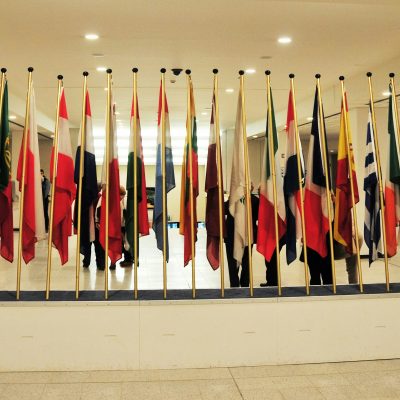The uneasy equation of the future EU defence budget

The European Union is entering into a ritual but complex and constrained negotiation that will last for more than 2 years: that concerning its next seven-year budget, the Multiannual Financial Framework (MFF), which will cover the period 2028-2034[1]. Led by the European Commissioner for the Budget, the Polish Piotr Serafin, these negotiations will be structured by the proposals that the Commission will have formally tabled by mid-July, the broad outlines of which are already known. And it will conclude, normally before the end of 2027, with haggling that will probably be guided more by accounting considerations than sectoral logic.
Among other things, the share of this budget devoted to defence will naturally be at the core of the discussions. In this segment, without reaching the 100 billion euros recommended by Thierry Breton and his successor Andrius Kubilius, we can expect a proposal for a significant increase. Announced by President Von der Leyen, it would meet the expectations expressed for several months by the heads of state and government at the European Councils devoted to defence (“spend more, better and together!”). Coming on the heels of the theatrical declaration of the NATO Summit setting an ambitious new spending target – so high that some consider it unrealistic – the debate on the EU’s future military budget will take on an acuteness that calls for three levels of analysis:
1) On what basis should its amount be set?
On this point, a little method shouldn’t be excluded.
In the 2021-2027 MFF, the appropriations voted amounted to 7.95 billion euros, allocated to the European Defence Fund (EDF) devoted to research and development (R&D).
In response to the new context of war in Ukraine, this envelope has been supplemented in 2023 by the 2 programmes ASAP[2] (500 million euros, production) and EDIRPA[3] (300 million euros, acquisitions). In addition, the EDIP[4] programme, currently being adopted, should add at least €1.5 billion this year.[5]
The total for defence in the current MFF is therefore around €10 billion[6] . This is the minimum we can expect for its successor.
To decide on a rational amount on this basis, several factors need to be taken into account, in a context where industry is being asked to produce as much as to develop new systems:
- It is not certain that an increase in the EDF is a priority: at a rate of one billion a year, it has found a cruising speed and is playing its role of networking the defence industrial base, with which a growing number of companies of all sizes are becoming familiar. Moreover, the criticism that it is sometimes spread too thinly does not argue in favour of increasing it.
- On the other hand, insofar as the EDF intervenes in upstream R&D, it would be justified to increase investment in downstream, i.e. in the exploitation of results produced by projects financed by the EDF. In practice, this would mean reserving a line to subsidize collaborative programmes using technologies funded by the EDF. This transition to the industrialisation phase, which is more budget-intensive, would deserve an effort at least equal to that made upstream (even if the EU subsidy rate may then be lower).
- The logic initiated by EDIRPA, and continued in EDIP, aimed at encouraging joint purchases by Member States must be continued and expanded. A substantial line, spent in the form of subsidies, should be devoted to this, meeting the dual objective of pooling expenditure and of European preference.
- Finally, direct support for industrial investment, in line with the ASAP principles taken up in EDIP, should be continued, but extended to objectives other than support for Ukraine.
The combination of these 4 segments – EDF upstream (8) and downstream (8), EDIRPA+ (5), ASAP+ (4) – would justify a total budget of around 25 billion euros (3.5 billion/year). Multiplied by at least a factor of four by the national appropriations that it would aggregate, this amount would have a very significant impact on defence investment within the EU (currently around 100 billion per year) and would usefully accompany the drastic increase decided at NATO. By the way, it would be legitimate for these substantial European budgets to be included in one way or another in the effort required of everyone to reach the 3.5% of GNP target.
2) What is the combination with national budgets?
European funding has two essential characteristics: it is only accessible subject to European conditions (cooperation, joint purchases, European materials and companies, etc.) and it is most often allocated in the form of co-financing or subsidies. They therefore act by stimulating and guiding the use by States of their own resources, encouraging them, without replacing the latter, to coordinate and pool their investment choices to a greater extent.[7]
The current increase in national budgets, which the NATO decision will accentuate, may have two opposing effects: some may consider that, having regained financial space for manoeuvre, they can exempt themselves from the European conditionalities and resources (and the Commission’s right of scrutiny that goes with them…)[8] ; others may find it in their interests to connect their growing expenditure more closely with EU programmes, providing them with a leverage effect and a secure framework for use.
The position of industrialists with regard to these prospects remains ambiguous: the vast majority of them are in favour of a substantial increase in European funding (some have even floated the figure of 40 billion euros for the next MFF…), but they fear the risk of seeing such an increase at the expense of national budgets through a transfer effect orchestrated by finance ministries. As many companies currently feel protected by the national preference that generally applies to the use of national funds (which are themselves on the increase), they are reluctant to consider trading it in for an uncertain European preference.
The most likely, and in fact desirable, scenario lies in the harmonious combination of the two sources of funding, with each Member State ultimately retaining the freedom to decide whether or not to call on European instruments to carry out its armaments operations. Experience has shown that once these instruments have been put in place, they arouse the interest of companies and administrations alike. And for the latter, the interest is often inversely proportional to their size: using EU mechanisms simplifies credit allocation decisions and the administrative burden associated with contracts (typical case of EDIRPA grouped orders placed by a single procurement agency on behalf of all participants).
3) How should these funds be allocated?
Primarily budgetary in nature, the discussion will naturally also focus on the priorities and methods of allocating the funds involved, with four dimensions to be taken into account:
- Decided in the name of industrial competitiveness (this is their legal basis), EU defence programmes must focus on technological (innovation, breakthrough capabilities, digitization, connectivity, etc.) and industrial objectives (serial effects, production investments, competition, consolidation, etc.), and benefit EU companies only. Their military justification is not a matter for the EU: it must emerge from consultation between Member States conducted at the European Defence Agency or within the framework of NATO, and ultimately in the programme committees where the selection of investments is decided.
- In its budget proposal, drawing on the experience of the current MFF, the Commission must resolve a contradictory injunction: on the one hand, it must justify the amounts requested by specifying as far as possible what they are to be used for; on the other, it must preserve flexibility and fungibility in order to be able to adapt to new priorities that may arise along the way. We saw this with the war in Ukraine, which obliged the Commission, from 2022, to reallocate appropriations, by definition limited, to finance ASAP, EDIRPA and EDIP…
- The priority given to supporting Ukraine will continue to be a determining factor in these programmes, whatever the outcome of the conflict, but the spectrum of capabilities benefiting from EU funding will naturally have to be broadened to include those that lend themselves to grouped purchasing, that have to be shared by necessity (strategic enablers), or that call on innovative skills, particularly in the digital field, of European companies.
- Finally, and this is an important point, the defence budget will be debated in symbiosis with the budget for space (€14.8 billion in the 2021-2027 MFF). Bringing these 2 lines together makes sense. They concern industrial ecosystems that are partly the same and have crossed objectives : almost 20% of the EDF is already funding space R&D, and the EU’s satellite constellations – Galileo, Copernicus and soon IRIS2 – offer services that are useful for defence. For reasons of economy and to maximise synergies, it would be logical for these 2 budgets, which are managed by the same Commission Directorate-General, to be proposed under a common chapter without being merged, a sort of competitiveness fund dedicated to the defence and space industry, promoting synergies and facilitating transfers during its implementation.
These various elements will feed into the negotiations that are about to start in the Council and the European Parliament. Confronting political positions will not bring them to a successful conclusion, and it would be disappointing if they were reduced to mere haggling over the level of funding to be made available. On this critical issue, the EU can and must demonstrate its ability to debate and decide in a more structured, thoughtful and consensual way than the NATO Council has just done under pressure from an American dictate. Paradoxically, the fragile financial situation of several Member States may encourage them to look more favorably on the introduction of a European budget capable of producing savings without penalizing their industrial base. As for industry, its future requires it to accept that European preference should gradually replace the protection of its national markets.
[1] See Editorial by Sylvie Matelly (Newsletter July-August 2025, Institut Jacques Delors).
[2] Act in Support of Ammunition Production
[3] European Defence Industry Reinforcement through common Procurement Act
[4] European Defense Industry Program
[5] See Infographic “The EU and the Defence Industry“, Institut Jacques Delors, December 2024.
[6] The SAFE programme is not taken into account here, as it frees up debt to supplement national budgets but has no direct cost for the EU budget.
[7] See Blogpost “For a Europeanisation of the sinews of war” (Institut Jacques Delors, January 2025)
[8] At the price of the additional costs inherent in pursuing a purely national approach.




